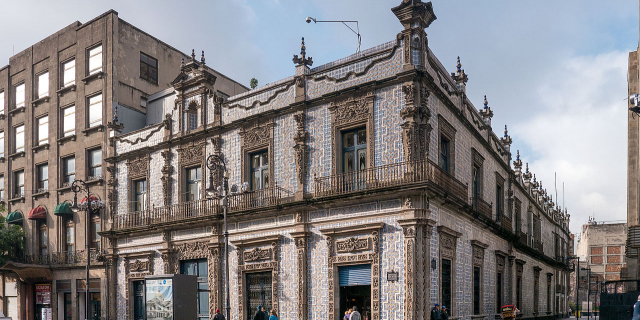Taxco de Alarcón
( Taxco )Taxco de Alarcón (Spanish: [ˈtasko] ; usually referred to as simply Taxco) is a small city and administrative center of Taxco de Alarcón Municipality located in the Mexican state of Guerrero. Taxco is located in the north-central part of the state, 36 kilometres (22 miles) from the city of Iguala, 135 kilometres (84 miles) from the state capital of Chilpancingo and 170 kilometres (106 miles) southwest of Mexico City.
The city is heavily associated with silver, both with the mining of it and other metals and for the crafting of it into jewelry, silverware and other items. Today, mining is no longer a mainstay of the city's economy. The city's reputation for silverwork, along with its picturesque homes and surrounding landscapes, have made tourism the main economic activity.
The name Taxco is most likely derived from the Nahuatl place name Tlachco, which means "place of the ballgame". However, one interpretation has the name coming from the word tatzco which means "where the father of the water is," due to the high waterfall near the town center on Atatzin Mountain. "De Alarcón" is in honor of writer Juan Ruiz de Alarcón who was a native of the town. Like many municipalities in central Mexico, the municipality's coat-of-arms is an Aztec glyph. This glyph is in the shape of a Mesoamerican ballcourt with rings, players and skulls, derived from the most likely source of Taxco's name.[1]
 José de la Borda
José de la BordaBefore the arrival of the Spanish in Mexico, the indigenous community known as "Taxco" was not located where the modern city is now. The name referred to a village about ten kilometers to the south, which is now referred to as Taxco El Viejo (Old Taxco). In pre-Hispanic times, this village was the most important in the area as it was the seat of the Aztec governor who presided over tribute collection in the surrounding seven districts.[1] The modern Spanish town of Taxco was founded by Hernán Cortés in an area previously known as Tetelcingo, because of the abundance of silver here.[1][2]
 The Santa Prisca Church bell towers.
The Santa Prisca Church bell towers.Mining here began in the pre-Hispanic period with natives extracting a number of stones for decorative and ritual purposes.[1] The Spanish discovered silver lodes here in around 1532, which started commercial silver mining in the area.[3] Mining operations in the area during the early colonial period was carried out mostly by mining haciendas such as the Hacienda del Chorrillo and the Hacienda San Juan Bautista, established by Cortés or his knights.[4] In the mid 18th century, José de la Borda arrived to Taxco and started more modern operations in mines called Pedregal, El Coyote, San Ignacio and Cerro Perdido.[1]
For most of the colonial period, the area was sparsely populated, including the town of Taxco itself. For this reason, it was governed as a dependency of Mexico City. When the modern state of Guerrero was created in 1850, Taxco was chosen to be the seat of the municipality of the same name. Since it was the only town of any size in the area, the town was taken a number of times during a number of different conflicts. During the Mexican War of Independence, it was taken by Hermenegildo Galeana in 1815. During the Reform Wars, it was taken by Porfirio Diaz in 1865. During the Mexican Revolution, it was taken by Jesus Moran and Margarito Giles in 1911, and occupied by Carranza's forces in 1916.[1]
Silversmithing was reinvigorated in Taxco by American William Spratling, who moved to the town in the 1920s, creating silver design workshops and exported items, mostly to the United States.[5] With its fame for silversmithing, tourism became a major economic force in Taxco.































Add new comment